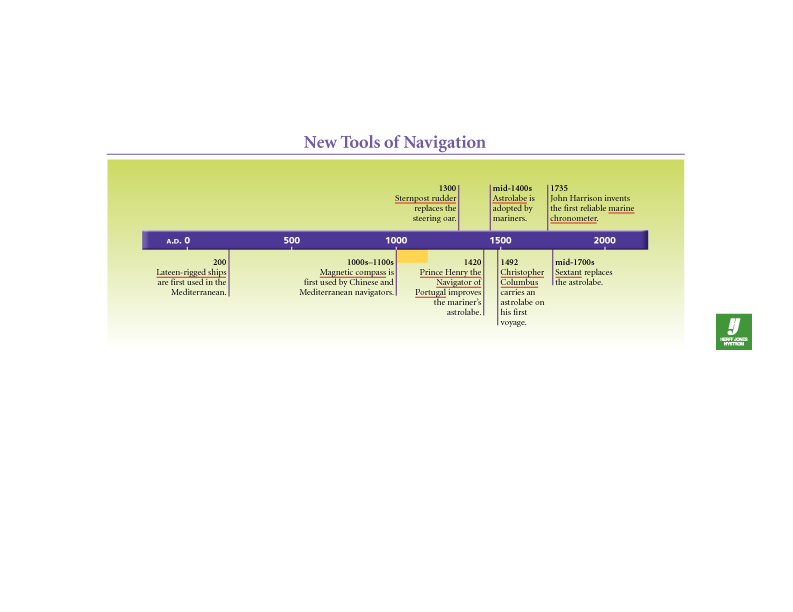
Ancient ships used square sales that worked only when the wind blew behind the ship. Triangular lateen sails, however, caught the wind on either side. Lateen sails allowed ships to tack, or change direction. As a result, the ships were less dependent on wind direction.
The first compasses were made of pieces of magnetized iron attached to straw or cork. The straw or cork floated in a container of water and then the iron pointed north-south.
Steering oars were unwieldy and often fell apart in bad weather. Sternpost rudders were able to steer large ships safely in rough waters.
The astrolabe was a widely used navigational tool on voyages of exploration. It helped mariners measure latitude.
Prince Henry the Navigator was a Portuguese prince who sponsored multiple expeditions to the West Coast of Africa during the 1400s. He is credited for establishing a navigational school in Portugal that also taught mapmaking, geography, and astronomy.
In 1492, Christopher Columbus sailed from Spain in search of a westward sea route to Asia. Instead he landed on an island in the Caribbean Sea, which led to contact between Europe and the Americas.
A chronometer is a clock that keeps time with precise accuracy. Chronometers placed on ships either stopped running or failed to provide accurate navigation. In 1735, an English clockmaker named John Harrison produced a marine chronometer that was almost twice as accurate as the clocks used on land during his era. Harrison's chronometer also allowed navigators to determine both latitude and longitude.
The sextant is an angle-measuring instrument that developed from the astrolabe. It is used to measure the angle between a celestial body, such as a sun or star, and the horizon. Unlike the astrolabe, the sextant measures both latitude and longitude.